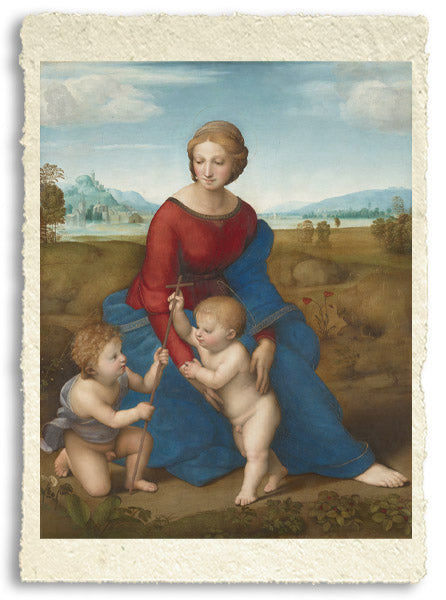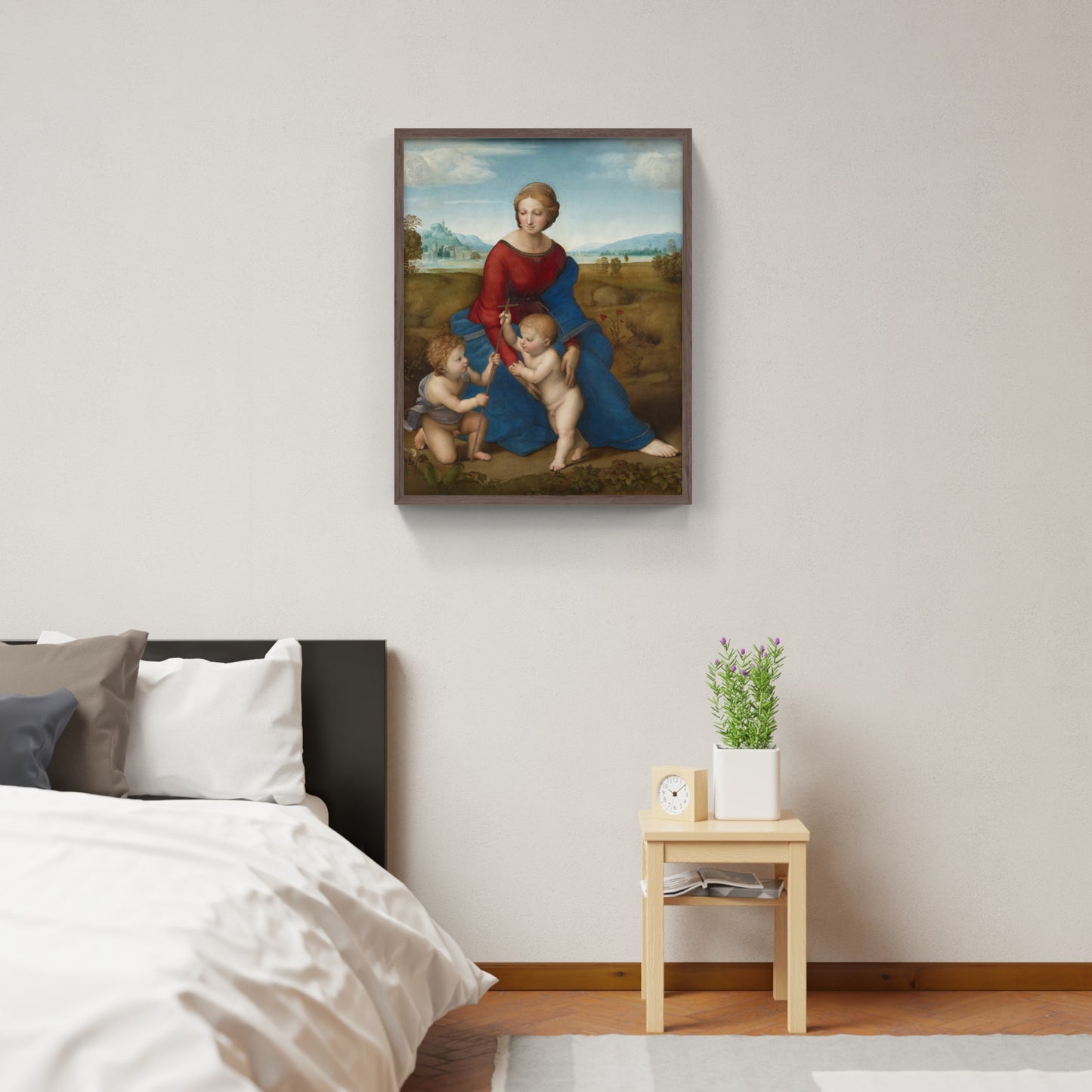Madonna del Belvedere or Madonna del Prato, by Raffaello Sanzio (1506)
Madonna del Belvedere or Madonna del Prato, by Raffaello Sanzio (1506)
Couldn't load pickup availability
SKU:VZEAT5MFBDHU4
WHY BUY
- Magnificent and real colors
- It makes any room elegant
- Perfect for a prestigious gift
CHARACTERISTICS
Print on handmade paper from Amalfi
Sheet size: 30 x 42 cm
Material: work printed on very fine handmade Amalfi paper with fringed edges
Print on handmade Amalfi paper with frame
Sheet size: 30 x 42 cm
With frame: 32 x 44 cm
Material: work printed on very fine handmade Amalfi paper with fringed edges, handmade beech wood frame
Print on pictorial canvas
Measurement: 80 x 60 cm
Material: work printed on very fine grain pictorial canvas
Frame: Light brown beech wood and handmade wood pulp
DO YOU WANT INFORMATION ON THE PRODUCT? WHATSAPP CHAT WITH A CONSULTANT
The work
The "Madonna del Belvedere", also known as the "Madonna del Prato", is a painting created by Raffaello Sanzio in 1506, at the age of 23. It represents the Virgin Mary with Baby Jesus and Saint John in a balanced and harmonious landscape, characterized by an aerial perspective that enhances the depth and integration between the human and the natural. This compositional balance, typical of the Renaissance, has made the work much admired in the past.
The gesture of Jesus grasping the cross is highly symbolic, foreshadowing his future sacrifice, while the red poppy symbolizes the blood he will shed for the salvation of humanity. Considered an icon of the new spirit of the Renaissance, the "Madonna del Belvedere" has been a source of inspiration for generations of artists and students, thanks to its grace, elegance and perfect harmony between the human figure and nature.
The painting, an oil on panel measuring 113 x 88 cm, is currently preserved in the Kunsthistorisches Museum in Vienna. Initially commissioned by Taddeo Taddei in Florence, together with the "Holy Family with palm", the work was subsequently transferred to the palace of Innsbruck after being sold to Ferdinand of Austria. In 1663 it arrived at Ambras Castle and in 1773 it was transferred to the Belvedere Palace in Vienna, entering the imperial collections.
The pyramidal composition of the group formed by the Madonna and the two children is a recurring feature in Raphael's works, similar to that of the "Madonna of the Goldfinch". Raphael's works were considered models of compositional balance until the nineteenth century, testifying to the lasting influence of the master.
How reproductions are made





Scopri i pregiati materiali di Trizio Editore
Carta di Amalfi fatta a mano, cornice in legno di faggio e vetro museale. Guarda i particolari dei prodotti che renderanno la tua casa più elegante e preziosa.



